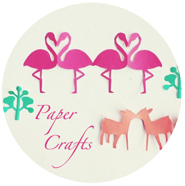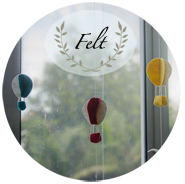One more week before the June school holiday ends. So are you running out of ideas where to bring your children?
I love authentic experiences. Not that I don’t bring K to theme parks, museums or fun kid places. But I love fresh ideas for experiences that are enriching and engaging for children.
There is so much about Singapore that K still don’t know about and I realized that we don’t need to travel out of the country, for him to experience something new and educational. In fact, I learn so much about my country each time I develop these heritage trails itineraries for K and his friends.
I have put together a series of posts and activity sheets that I have previously created (tried and tested with 6-7 year olds!), that will be useful guides for you to bring your children on a cultural and heritage walkabouts around Singapore.

The four key cultures that will be introduced through these trails will be the Chinese, Arabs/Malays, Indians and the Peranakans. The Arab Street and Little India walkabout take about 4 hours, while the Peranakan and Chinatown trails are a little more extensive, as there are separate areas to go to.
The cost of each walkabout is kept at a minimal, to only meals taken at these locations, admission fees to the museums and small souvenirs that your child might be keen to bring home with him/her.
1. Arab Street
The Malay historic district is on Arab street, right off Beach Road in an area known as Kampong Glam.
The key landmarks for this Arab Street walkabout will include Sultan Mosque, and the Malay Heritage Centre. But do spend more time browsing through the textile, handicrafts and rattan shops along the streets. And keep a lookout for the shops with Muslim and Arab influences, selling the Islamic prayer rugs and skull caps, sarongs, batiks, all which have been in Arab Street to 3-4 generations.
Do make sure to pop by one of the coffee shops to relish in a plate of Nasi Lemak or Goreng for lunch.

Here’s a post of my previous Arab Street Heritage Trail experience for a more visual breakdown of the things that children can do, and download a copy of the Arab Street Trail for Children Activity Guide.
2. Little India
The Little India trail starts at Serangoon Road at Tekka Centre, where you can have some South or North Indian cuisine, coupled with Teh Tarik for breakfast, then shop for an traditional Indian costume for your children. As you take the walk down Serangoon Road, you will see many Goldsmiths shops and you can buy a flower garlands made out of jasmine, lilies or chrysanthemum flowers, from the little carts that line the street leading up to the Sri Veeramakaliamman Temple.

Here’s the post on the Little India Walkabout and your can download a copy of the Little India Trail for Children Activity Guide here.
3. Peranakans – East Coast and Koon Seng Road
I guest-blogged on The Gingerbread Mum about my Peranakan Heritage Trail, and you can download a copy of the Peranakan Heritage Trail Activity Guide here.

4. Chinatown – Telok Ayer and Pagoda Street
The trail for Chinatown starts at Telok Ayer Street for a visit to one of the oldest Chinese Temple in Singapore, Thian Hock Keng. Before moving on to Pagoda Street (which is not a short distance to walk to btw!), stop by for brunch at Maxwell Road where you can savor authentic Hainanese Chicken Rice or Hum Chim Pang.
Once you reach Pagoda Street, there will be plenty of handicrafts and souvenir shops along the way, and the vast variaties of knick knacks sold in these shops might distract the children off the purpose of the visit for a while. However, don’t miss seeing the traditional Chinese Medicine shop with their tonics, and strong smelling exotic herbs left outside their shops in rattan trays to dry in the sun.

Then make your way to the Chinatown Heritage Center on Pagoda Street to view dioramas of the dark living quarters of the Chinatown immigrants. Read this post to see what to expect at Chinatown Heritage Centre and my experience visiting Chinatown.
Here’s the link to download the Chinatown Trail for Children Activity Guide.
—-
These Heritage Trails are must do for children 4-8 years old as they will be sure to learn something unique to the rich heritage of Singapore. And I am certain that you will find yourself learning something new about these cultures too!

































